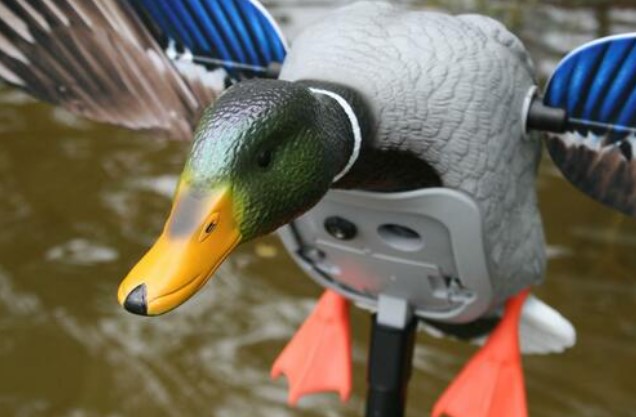New to the world of duck decoys or just want to learn a little more before making a significant investment in your own collection. Check out these 5 Helpful Things To Know About Duck Decoys.

- Duck Decoys come in a variety of species and, therefore, it is time well spent learning what kind of ducks frequent hunting spots in your area. Mallards are especially common in many locations around the U.S. and this species’ decoys are often included in puddle duck spreads. Mallard decoys often attract other duck varieties such as gadwalls, pintails, and teal. If finances, allow include a mix of decoys among the species that you are hunting.
- Having both Floating and Motion Decoys in your arsenal of duck hunting equipment offers flexible placement options. Floating Decoys can easily be placed on either/both water and fields or clearings adjacent to the water source. Motion decoys offer the extra realism of water and bird movement that is attractive to ducks coming through the area. Motion decoys such as these from MOJO Outdoors are available with options that include vibration , simulation of splashing from feeding, and spinning wings.
- Proper weighting and stringing (anchors and lines) of your decoys will vary by size and depth of body of water that you are hunting along with weather conditions. Getting your rigging right will directly contribute to the ease of handling and effectiveness of your decoy spread. Be sure to seek the advice of experienced duck hunters in your area or consult experts at a reputable outdoors store such as Simmons Sporting Goods.
- As part of your decoy purchases, plan for how you are going to transport them to and from your hunting location. Decoy bags make carrying your hunting gear in and out much easier, and save you time and space. These bags come in a range of designs with some including mesh easy draining material and others with slotted spaces for decoy and pockets for weights and lines. Some bags resemble a backpack design and other boxes or baskets with side handles.
- Maintenance is key to getting maximum life out of your decoys. Be sure to rinse your decoys off after hunts and to let them thoroughly dry before storing. When not in use, keep the decoys stored out of direct sunlight and exposure to weather.
The right equipment and the knowledge of how to use it can make a huge difference in your duck hunts.